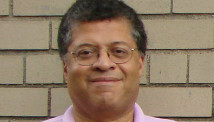STORY HIGHLIGHTS
- Connecticut school massacre prompts a number of proposals in Washington aimed at curbing gun violence
- They include a ban on assault weapons that insiders say has little chance of getting through Congress
- Some bipartisan support for proposals to expand background checks around gun purchases
Washington (CNN) -- December's school massacre in Newtown, Connecticut, has prompted congressional lawmakers and the White House to offer a number of proposals aimed at curbing gun violence.
Here are some of the measures garnering the most attention:
The White House plan
President Barack Obama signed 23 executive actions, which don't require congressional approval, to strengthen existing gun laws and take related steps on mental health and school safety.
He has also called on Congress to reinstate the Clinton-era assault weapons ban that expired in 2004, to restrict ammunition magazines to no more than 10 rounds, and to expand background checks to anyone buying a gun, whether at a store or in a private sale at an auction or convention.
Assault weapons ban revisited
A proposal by Sen. Diane Feinstein, D-California, would not ban ownership of assault weapons outright, but would prohibit new ones from being manufactured, sold or imported. It would also outlaw ammunition magazines that hold more than 10 rounds.
She said the goal is to "dry up the supply of these weapons over time." The measure, along with a companion bill in the House, is opposed by the nation's powerful gun lobby, led by the National Rifle Association.
Cracking down on straw purchases
Vermont Democrat Sen. Patrick Leahy, chairman of the Senate Judiciary Committee, has called for stronger background checks and a crackdown on so-called straw purchases, in which people who can pass background checks buy weapons for others. Leahy has proposed a measure to increase penalties for straw purchasers.
Curbing gun trafficking
A new House bipartisan gun control bill seeks to make gun trafficking a federal crime. It has some bipartisan support and mirrors a measure proposed in the Senate.
House Democratic efforts
A group of House Democrats, who were part of the chamber's Democratic Gun Violence Prevention Task Force, unveiled 15 proposals to address gun violence. The measures largely echoed those previously backed by the White House.
The package is similar to other Democratic measures that would address background checks, ban high capacity magazines, and crack down on gun trafficking.
House Majority Leader Eric Cantor, R-Viginia, told CNN that he supports beefed up background checks for gun sales.
Closing gun show loophole
A group of four senators working behind the scenes on a bipartisan bill to expand background checks on gun sales is making significant progress, according to sources in both parties familiar with their work.
The group includes Sen. Tom Coburn, R-Oklahoma, who has an A rating with the National Rifle Association, and Sen. Joe Manchin, D-West Virginia, a long time advocate of gun rights.
The legislation would effectively require background checks on private gun purchases made with non-licensed gun dealers, according to sources in both parties. That would include closing the so-called gun show loophole.
Political play
House Speaker John Boehner has said he has no plans to bring any measure up for a vote until the Senate acts first.
Republicans oppose any assault weapons ban and rural-state Democrats facing tough re-election fights are unlikely to support it as well, meaning that proposal has little chance of passing Congress.
There is some bipartisan support for expanded background checks, especially to keep guns out of the hands of people with mental illness. A number of lawmakers may also support limiting the size of ammunition magazines.
Some lawmakers have said that various gun proposals may be addressed in separate bills, rather than a comprehensive package, which could more easily be targeted by opponents.
The top Democrat in Congress, Senate Majority Leader Harry Reid of Nevada, has a good rating from gun rights groups and has said he would work to ensure that a variety of proposals are brought to the floor for consideration.
He opposed the 1994 assault weapons ban and has indicated support for expanding background checks but refuses to endorse a new weapons prohibition.












